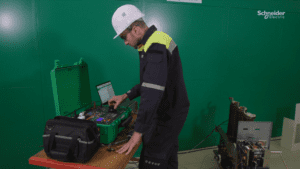We have seen many changes in the way retail customers have interacted and behaved as a result of the global pandemic. In the retail sector, one major focus is shifting from brick and mortar stores to building a greater online presence. Amidst this shift, retailers have been reimagining their physical stores and placing a greater emphasis on immersive customer experience. Big names are closing retail shop fronts and opening “innovation stores,” where entertainment is as much a part of the experience as the purchase itself.
Across the world, retail customers are experiencing all sorts of changes to their retail stores, many which they do not want to see end. So, what are the Top 5 Retail Trends in 2020? How will investing in connected technologies help drive customers back to your stores even in a post-pandemic world?

BOPIS – Buy Online and Pick up In Store
Buying online and picking up in store allows customers to limit their time away from home while ensuring their goods are kept safe and secure (e.g. not leaving parcels on the front porch). To survive, retail owners need an online presence where they can showcase their goods, maintain accurate inventory, and allow customers to select and purchase products for later collection. Some clothing and accessory stores are also investing in augmented reality technology. It allows customers to virtually try on their goods without the need to touch every item. This can range from virtually testing different pairs of glasses to find the perfect pair for their face shape to finding which coloured shirt is most flattering.
Contactless Payment
To limit the risk of contaminates, customers and store managers are steering towards card payments as it is a safer option than handling cash. For retailers to make a smooth transaction, their point of sale (POS) machines must be operating properly at all times. It’s not just a matter of being on, connection delays can add to transaction times and become a source of frustration and potential revenue loss. Data must also be transmitted and stored securely to ensure privacy and protection. Considering the large volumes of data generated today, it is important to ensure a backup UPS system is installed for the POS. This allows the system to keep running even if there is a power outage.
Customer Restrictions and Social Distancing
Retailers may face restrictions on the number of people in their stores for some time to come. Schneider Electric’s people counting sensors can help retailers monitor the number of people in an area at once. This can ensure social distancing across the whole store, as well as in individual aisles. The cameras have the option to send an alert via the mobile app if too many people are detected in one area. The data can also be shared on a screen instore to give customers peace-of-mind and that the store is operating according to the latest retail store regulations. This information can also be used by Facility Operations Managers and Corporate Head Offices who can better study and understand the behaviour of their consumers. For example, they can easily analyse the data to identify which areas of the store are most popular or understand consumer’s shopping habits.
Acceleration of the retail revolution
The retail industry has been undergoing extreme changes over the past decade, with the pandemic adding to the disruption many are seeing. In fact, before the pandemic, there was already a definite rise in demand for people counting and remote applications in retail. However, there was no real push or urgency for retailers. This has changed with the pandemic. It is now clear that a digital transformation is needed across retail stores for them to remain agile and continue trading. The next steps to returning to Business As Usual is to bring customers back into your store, whether it be online, an immersive experience, or brick and mortar retail outlet. To make this happen, customers must be confident that you are offering them a safe environment.
Online availability of goods, virtual and augmented reality applications, e-commerce and immersive customer experiences are all needed to ensure the retail sector can survive and thrive. Schneider Electric offers advice and support for businesses looking to make a digital transformation, as well as the products and solutions necessary to put digital projects into place. Across the world, we have helped many retail customers automate their retail process to be at the top of their business. Watch an example of how EcoStruxure Facility Expert can help small business improve efficiency.
For more information about how Schneider Electric can help you and your retail business, visit se.com/au/retail or contact one of our Sales Representatives today.
Want more? Schneider Electric is running Master Your Energy Competition. Join to win $5,000 worth of products that can help you monitor and control your retail store’s energy usage. Simply visit the master your energy registration page for details.



